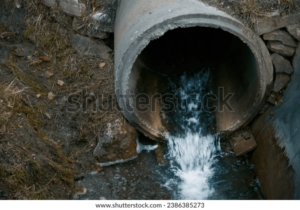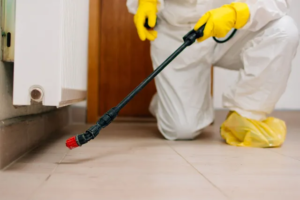A stump can be a significant eyesore in your yard. Various removal methods exist, from grinding to chemical treatment to manual digging.
If you prefer a hands-on approach, consider using the manual method for removal. First, dig around the stump and expose its roots. Then, use a mattock or pickaxe to chop through the roots. Contact Tree Stump Removal San Diego now!
Chemical Method
Tree stumps are unsightly and obstructive, and they can attract pests, encourage the growth of invasive weeds, and cause damage to other trees and shrubs sharing the same yard space. Not only that, but they can also rot and cause soil instability. Ultimately, they can be detrimental to your home’s value and pose a safety risk for your children and pets. That’s why removing any remaining tree stump is important as soon as possible. There are several different ways to do this, and some are more labor-intensive than others. However, there is a less strenuous method that can be done by using chemical products.
While there are a few different kinds of chemical stump removers on the market, most work by speeding up wood decay. They can be applied to holes drilled into the stump, or mixed with water and applied directly onto the surface of the stump. This process can take some time, as the chemicals need to penetrate the stump and get to work rotting away the remains. However, there are ways to speed up this process, such as by drilling large vertical holes and filling them with potassium nitrate or rock salt. This will give the fungi more to work with, and can help it break down the stump faster.
It is important to note that using chemicals in this way can be very dangerous, so it’s best to only do this if you are familiar with the proper safety procedures. Always follow the instructions on the product’s label, and make sure you use safety glasses or goggles to protect your eyes from wood particles. Also, be sure to wear sturdy work gloves and steel-toed boots.
This is a good option for those who want to avoid backbreaking labour, but still need to remove a tree stump. While it may not be as quick as digging out the stump and roots by hand, it is a much safer option for those who are hesitant to use power equipment. It is also ideal for those who need to remove a large stump quickly, as it can be used in conjunction with other methods, such as burning or manual removal.
Manual Method
When a stump needs to be removed without using a power tool, the manual method can be effective. It involves digging a trench around the stump’s base, exposing its roots and cutting them off with a mattock (a combination tool with a pickaxe on one end and a hoe on the other). Loosening dirt with a shovel or a mattock can be strenuous work, but a hose can help wash away loose dirt and expose more of the root system. After severing the main roots, you can pull the stump out by hand or with a vehicle attached to the end of the mattock chain.
The process of removing a tree stump with this technique is lengthy and time-consuming, but it can be effective when the conditions are right. The natural decomposition of a tree stump over time can be accelerated with the addition of high-nitrogen fertilizer, which will boost the activity of the microorganisms responsible for breaking down the wood and enriching soil.
After a few weeks, the stump will be ready to be pulled out with a vehicle, assuming it is still in good condition. A vehicle equipped with a strong tow chain is ideal for this job, and you will also need a winch or other pulling mechanism to bring the stump free from the ground. A vehicle like this isn’t always a good choice for large stumps, so it may be necessary to hire professional stump removal services instead.
When the stump has been cut, a heavy-duty tarp should be placed over it to keep rain from diluting the chemical solution and slowing down the process. A few more weeks of treatment will result in a soft, spongy stump that can be easily pulled out with the vehicle or another tool. If you’re unable to remove the stump, it’s important to refill in the hole left behind and cover the area with mulch to prevent further decay and encourage future plant growth. This will keep the stump from competing for water and nutrients with new plants, reducing the risk of disease and pests.
Burning Method
Burning is a cheap method of stump removal, but it’s not the safest or fastest. It can take up to a day to remove a large stump through burning, and you’ll have to be on site the entire time. It’s a good idea to bring a hose and fire extinguisher to control any unexpected flare-ups, and you should prepare by scheduling a hefty block of time in which to carry out the process.
If you choose to use this method, you must ensure that it’s legal in your area, as open burning is not usually allowed in urban areas. If you don’t, you may be liable for fines and environmental damage. To start, dig around the stump and expose as much of it as possible. This will make it easier to get rid of. If it’s particularly fresh, you can try to speed up the rotting process by drilling holes into the stump and filling them with nitrogen-rich fertilizer. This stimulates microbial activity and will eat away at the stump.
Once the stump is exposed, you can start to build up the fire. Put kindling on and around the stump and carefully add wood as needed to sustain it. Be careful not to leave the fire unattended, and monitor it at all times from a distance.
You can also use a powdered fertilizer known as salt peta, which is poured into the holes drilled into the stump. This dissolves the charcoal and makes it more brittle, making it easier to chip away.
If you don’t want to wait for the stump to rot, you can also hire professional stump grinding services. They can grind the stump and cut it into smaller pieces that you can remove from your property. You should still be aware of any underground utility lines and other important issues, such as the risk of environmental damage or damage to nearby plants. Before hiring professionals, check with your local utility company to locate any lines that may be in the ground or near the stump. Then, clear the area of any fences, sprinkler systems and garden ornaments that could obstruct or be damaged during the process.
Chainsaw Method
Using a chainsaw to remove a stump is an excellent option for those who want to avoid chemicals, but the process can be challenging and dangerous. Unless you have a lot of experience with a chainsaw, it’s best to hire a professional to do the job for you. Before you start, make sure that the area around the stump is clear and free of debris. You should also wear protective gear, including a face mask, safety goggles, and steel-toed boots.
The first step is to use the chainsaw to cut as much of the stump above ground level as possible. Once this is done, move back and take a close look at the stump to make sure that you’ve got all of the roots. Depending on the size of the stump, you may need to dig up large sections of the root system in order to fully remove it from the ground.
After the root system has been removed, it’s time to use the chainsaw to cut the remainder of the stump down. This is a long and tedious task, so be prepared to work for a few hours. To help speed up the cutting process, you can use a chainsaw attachment called a sawzall. This tool has a blade that is less likely to be damaged by dirt than a regular chainsaw.
Once the stump is cut down, you can begin to remove it by hand. This is a very tedious process and requires a great deal of digging and cutting. Depending on the size of the stump, it may take several weeks or even months before it’s completely removed from the ground.
One method that can speed up the removal of a tree stump is to use a chemical solution. There are multiple types of chemical solutions on the market that can be poured down holes drilled in the stump. These chemicals speed up the natural decay process and break down the remaining stump fibers and roots more quickly. If you choose to use this method, it’s important to choose a day with no wind or rain in order to reduce the risk of the solution blowing away or spreading to other parts of your yard.




